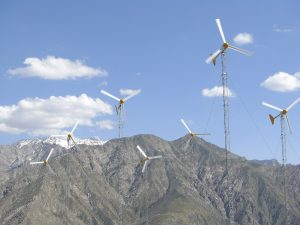Afghanistan’s heavy reliance on international aid — in 2021 foreign aid comprised 75 percent of its total economy — has left it in a low equilibrium trap.
The withdrawal of NATO and U.S. military forces in 2021 led to the collapse of the Afghan Republic and paved the way for the Taliban to recapture power in Kabul, which in turn resulted in the suspension of around $2 billion in aid through the Afghanistan Reconstructive Trust Fund (ARTF) and International Development Association (IDA). This exposed Afghanistan to significant macroeconomic woes, livelihood challenges, disruption of critical infrastructure development and soaring unemployment. A World Bank report says that as of November 2023, half of the Afghan population lives in poverty, with 15 million of its 43.2 million population facing food insecurity.
The presence of the international community in Afghanistan over the past two decades, significantly impacted its economy. For instance, about 40 percent of the Afghan population lived near military bases during this period, and the livelihood of nearly 90 percent of Kabul’s residents relied on economic activities tied to military bases and foreign aid.
When the international forces withdrew, sectors, especially logistics and construction, which depended on foreign support, suffered setbacks and caused job losses.
The economic challenges that Afghanistan has faced post-withdrawal underscore the need for the country to diversify its funding sources and reshape domestic financial policies to mitigate the impacts of foreign aid fluctuations. Additionally, it needs to prioritize the revival of the Afghan domestic financial potential, focusing on the involvement of Afghan stakeholders. This will help foster domestic economic growth and could significantly reduce unemployment by creating sustainable business opportunities within the country.
Despite comprising 19 percent of Afghanistan’s total energy supply, Afghanistan’s renewable energy remains largely untapped. Investing in renewable energy can drive sustainable economic growth in the form of job creation, and thus reduce dependency on external stakeholders. It could also position Afghanistan as a regional leader in clean energy innovation, fostering long-term resilience.
Afghanistan possesses abundant natural resources, including energy, water, and wind. Overall, it could produce 23 gigawatts (GW) from hydro, 67 GW from wind, and a staggering 220 GW from solar resources. With these resources, Afghanistan has the potential not only to meet its own energy demands but also to export surplus energy to other South Asian nations.
However, it has only limited capacity to draw benefits from its resources. In the absence of sufficient hydropower projects, its river waters end up flowing into neighboring countries.
Investing in water as a source of renewable energy presents a dual benefit for Afghanistan. Not only will it enable Afghanistan to use its water resources for the benefit of its own people by generating electricity, but also it could reduce its import of electricity—at present, Afghanistan heavily relies on imported electricity, notably from Tajikistan, which is supplying around 1.6 billion kilowatt-hours as of 2023, even as this spurs economic growth.
Besides, solar energy accounts for over two-thirds of Afghanistan’s total renewable energy potential of over 300,000 megawatts (MW). Given its approximately three hundred sunny days per year, Afghanistan is well-positioned to harness solar power. Afghanistan’s solar energy potential is comparable to that of four sunbelt states in the United States.
Investment in renewable energy will enhance the country’s energy independence and will significantly boost industry and commerce. This is the rationale behind developing the Hisar-e-Shahi Industrial Solar Park Initiative in the eastern Nangarhar province.
Engaging Afghan private firms to invest in the country’s abundant renewable resources can make the country’s economic transition feasible and profitable.
During the past two years, 63 agreements worth $54.5 million have been inked between the Ministry of Industry and Commerce (MOIC) and private institutions, providing employment for over 641,000 people across 25 provinces.
Recently, the World Bank Group adopted “Approach 3.0,” deploying $300 million through international organizations to support critical services in Afghanistan. This aid aims to provide humanitarian assistance while circumventing the Taliban’s involvement. The World Bank also approved the $1.2 billion CASA-1000 clean energy project, involving Tajikistan, Kyrgyzstan, and Pakistan.
However, while investing more in renewable energy is welcome, engagement of the Afghan private sector, if not the de-facto regime, is necessary.
Analysts at the Afghanistan Chamber of Industry and Mines are emphasizing the need for the international community to cooperate with the Afghan private sector to mitigate the current economic crisis. In this regard, renewable energy has the potential to ensure sustainable business practices for Afghanistan’s economic stability. Supporting Afghan private firms with investment in sectors left vacant due to the absence of international stakeholders could be transformative.
As Afghanistan navigates post-NATO and US withdrawals, embracing renewable energy as a cornerstone of economic development holds the key to sustainable economic growth for Afghanistan’s future. Synchronized collaboration between international investors, Afghan stakeholders, and policymakers from the Ministry of Finance and the Ministry of Economy will be crucial in revitalizing Afghanistan’s economy, and self-sufficiency, creating jobs, and reducing dependency on foreign aid.

































